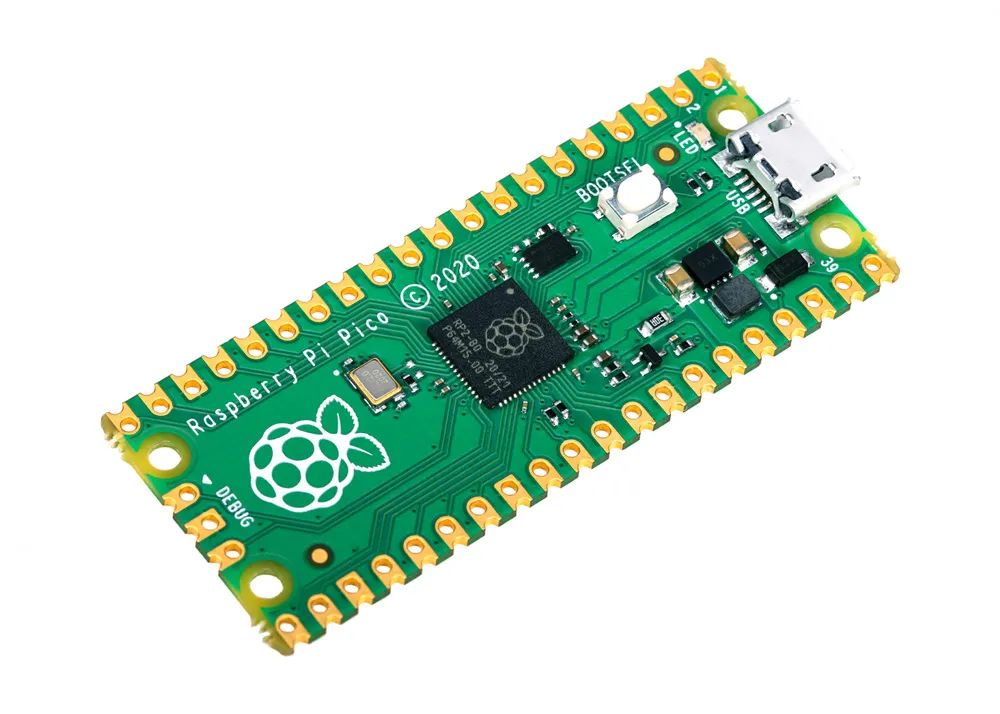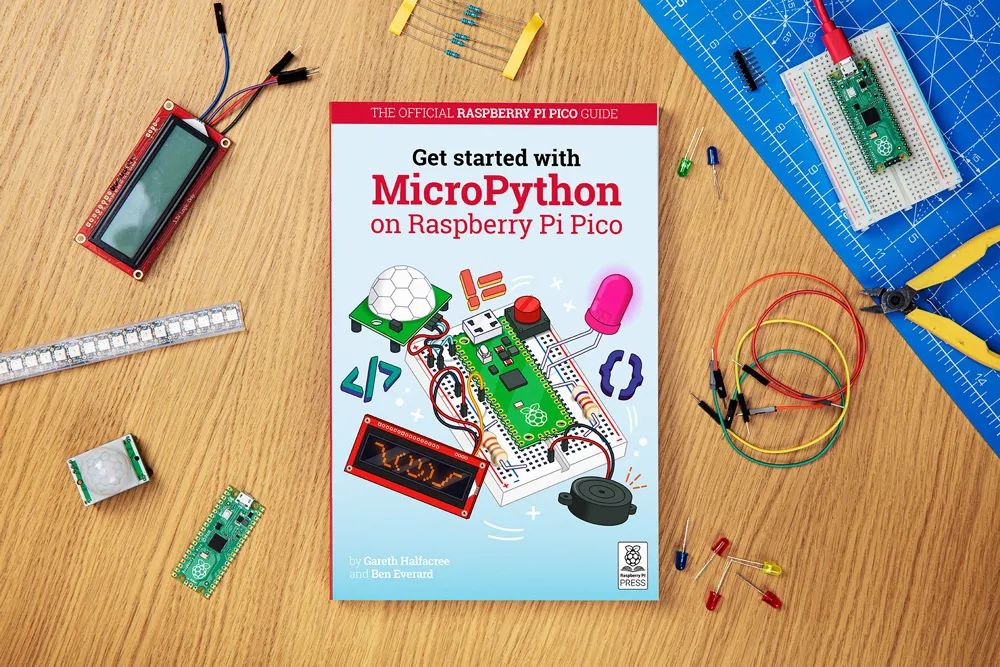
Today, the Raspberry Pi Foundation released its first microcontroller-level product: Raspberry Pi Pico. Built on a brand new RP2040 chip, it is priced at only $4.

If you have used Arduino or some development boards that support MicroPython, you should be familiar with this type of microcontroller product (MCU). With ultra-low power consumption, extremely low I/O latency, low cost, and simple control methods, the Raspberry Pi Pico is as easy to use as other MCUs and can be widely applied.
RP2040 on Raspberry Pi Pico
 – The RP2040 chip is in a 7×7mm QFN-56 package, with specifications as follows:– Dual-core Arm Cortex-M0+ @ 133MHz– 264KB SRAM and 2MB of onboard flash memory– Supports up to 16MB of external flash via a dedicated QSPI bus– DMA controller– 30 GPIO pins, with 4 usable as analog inputs– 2 UARTs, 2 SPI controllers, and 2 I2C controllers– 16 PWM channels– USB 1.1 host and device support– 8 programmable I/O (PIO) state machines for custom peripheral support– Supports UF2 USB mass storage boot mode for drag-and-drop programming
– The RP2040 chip is in a 7×7mm QFN-56 package, with specifications as follows:– Dual-core Arm Cortex-M0+ @ 133MHz– 264KB SRAM and 2MB of onboard flash memory– Supports up to 16MB of external flash via a dedicated QSPI bus– DMA controller– 30 GPIO pins, with 4 usable as analog inputs– 2 UARTs, 2 SPI controllers, and 2 I2C controllers– 16 PWM channels– USB 1.1 host and device support– 8 programmable I/O (PIO) state machines for custom peripheral support– Supports UF2 USB mass storage boot mode for drag-and-drop programming
The Raspberry Pi Foundation stated that the Raspberry Pi Pico was developed in collaboration with Damien George, the creator of MicroPython. It is evident that the design of the entire development board incorporates many excellent features of the pyboard.
 Additionally, Adafruit and Pimoroni are also involved in the RP2040 ecosystem, releasing similar products:
Additionally, Adafruit and Pimoroni are also involved in the RP2040 ecosystem, releasing similar products:

Adafruit Feather RP 2040

Adafruit ItsyBitsy RP 2040

Arduino Nano RP2040 Connect

Pimoroni PicoSystem

Pimoroni Pico Explorer Base

SparkFun Thing Plus – RP2040

SparkFun MicroMod RP2040 Processor

SparkFun Pro Micro – RP2040
It is believed that the Raspberry Pi Pico and RP2040 ecosystem will gradually become richer.
Recommended Reading: (Click the title to jump)

Likes and views are the biggest support
